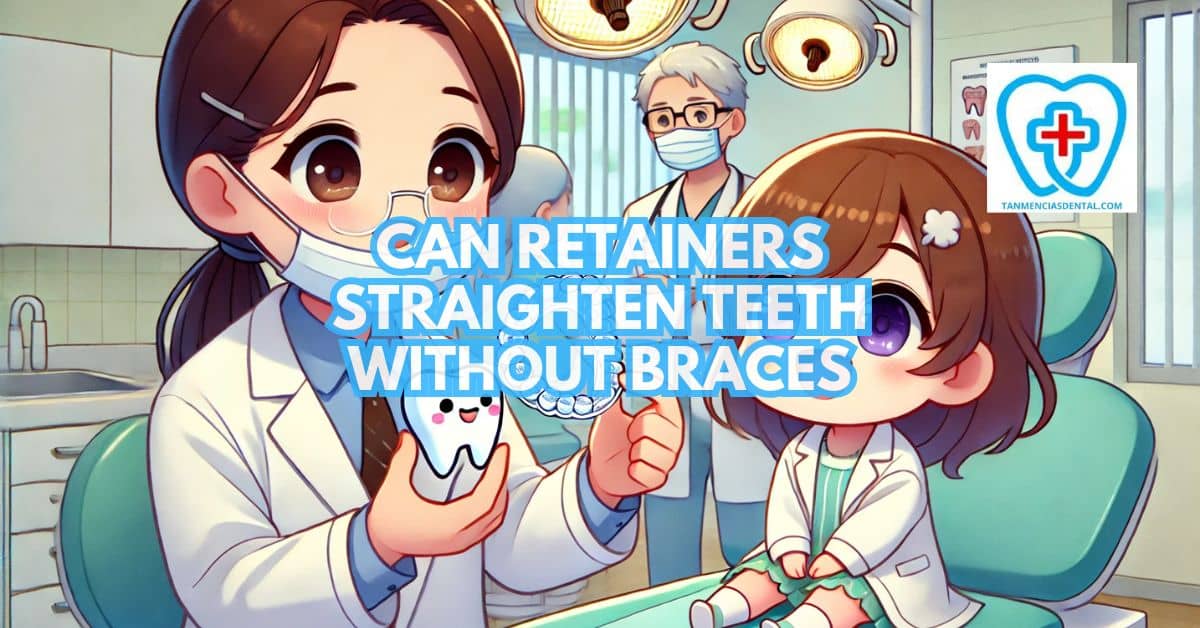Many people wonder if retainers can fix their teeth without needing braces.
Retainers are primarily used to keep teeth in place after orthodontic treatment.
However, in some cases, they can assist with minor adjustments.
The effectiveness of retainers depends on their type and how they fit the teeth.
Understanding their function is essential before expecting significant changes in alignment.
1. Understanding the Role of Braces and Retainers
Braces and retainers serve different functions in dental correction.
Braces apply continuous pressure to gradually shift teeth into the desired position.
Retainers, in contrast, primarily help to maintain tooth alignment after braces or minor shifts.
They do not exert the same level of force as braces, making them unsuitable for significant changes.
Understanding how each works is essential for choosing the right option for teeth alignment.
🦷 Can Quotes About Brushing Your Teeth Actually Make You Look Forward to Brushing?
2. What Retainers Do for Your Teeth
Retainers prevent teeth from shifting back to their original position after orthodontic treatment.
They help maintain alignment, especially after braces have done the initial work.
Some retainers can also correct minor shifts that occur naturally over time.
Consistent wear, as prescribed by a dentist, ensures that teeth remain in the correct position.
Skipping use for long periods can result in teeth movement, requiring additional orthodontic treatment.
🦷 Can You Use Whitening Toothpaste With Braces? What You Need to Know
3. Different Types of Retainers Explained
There are three common types of retainers: removable, fixed, and clear plastic retainers.
Removable retainers can be taken out while eating or brushing and require regular cleaning.
Fixed retainers are bonded to the back of the teeth and provide continuous support, preventing movement.
Clear plastic retainers fit snugly over teeth and resemble aligners, but they are not designed for major corrections.
Each type has its benefits and should be selected based on individual needs and professional recommendations.
🦷 Can Veneers Get Cavities? Here’s What Your Dentist Wants You to Know
4. Can Retainers Actually Move Your Teeth?
Retainers can shift teeth slightly but only within certain limits.
They work best for keeping teeth in place rather than actively repositioning them.
If a tooth has moved slightly out of alignment, a retainer may help guide it back.
However, they lack the continuous force that braces provide, making them ineffective for severe misalignments.
For significant adjustments, orthodontic treatment with braces or aligners is usually necessary.
🦷 Can You Whiten Bonded Teeth Effectively at Home?
5. How Retainers Might Help Straighten Teeth
Retainers are most effective for small adjustments rather than major realignments.
They can close tiny gaps, make slight adjustments to a single tooth’s position, or maintain the results of braces.
A well-fitted retainer applies gentle pressure that may gradually reposition teeth if they have shifted slightly.
However, retainers do not work quickly, and noticeable improvements require consistent wear over time.
Patients must follow their dentist’s instructions carefully for the best results.
🦷 Essential Tips for Maintaining Good Oral Hygiene
6. The Limitations of Retainers in Teeth Straightening
Retainers cannot correct serious misalignment or bite issues.
Unlike braces, they do not apply continuous pressure to shift teeth into a new position.
They are also ineffective for treating overcrowding, large gaps, or deep overbites.
Relying on retainers for major changes can lead to frustration and unsatisfactory results.
In more complex cases, orthodontic treatment with braces or clear aligners is the better solution.
🦷 Do Chipped Teeth Heal? Why Professional Treatment Is Often Necessary
7. Clear Aligners vs. Retainers: What’s the Difference?
Clear aligners and retainers may appear similar, but they serve different purposes.
Aligners are specifically designed to actively move teeth into new positions, while retainers mainly maintain alignment.
Aligners must be worn for most of the day and are replaced regularly to guide teeth through multiple stages of movement.
Retainers, in contrast, are used after treatment to hold teeth in their final position.
For individuals needing more than minor corrections, aligners are the more effective option.
🦷 What Happens If You Don’t Brush Your Teeth With Braces?
8. When Retainers Can Be Effective for Minor Shifts
Retainers are useful when teeth have slightly moved after braces have been removed.
Small gaps or minor rotations may sometimes be corrected by consistently wearing a retainer.
However, retainers only work well if the movement is recent and not too severe.
If the teeth have shifted significantly, a more active treatment such as aligners or braces is necessary.
Consulting a dentist ensures that a retainer is the right choice for a specific case.
🦷 Can Crowns Get Cavities? Understanding the Risks and What You Can Do
9. When Should You Consider Using Retainers for Teeth Straightening?
Retainers can be an option when misalignment is mild and does not affect biting or chewing.
If a single tooth has moved slightly, a retainer may help guide it back into position.
People who previously had braces and noticed minor shifting may also benefit from using a retainer.
However, if significant correction is required, a dentist may recommend aligners or braces instead.
Understanding the extent of the problem is key to deciding whether a retainer is the right solution.
🦷 What Dentist Does Implants and How to Choose the Right One for You
10. Why Consulting a Dentist is Key Before Using Retainers
A dentist can determine whether a retainer is suitable for a person’s specific dental needs.
They will assess the severity of misalignment and decide if a retainer alone is sufficient.
Without professional advice, someone may use a retainer with unrealistic expectations.
Regular dental checkups also ensure that the retainer fits properly and does not cause unintended shifting.
Expert input prevents wasted effort and helps ensure the best treatment choice.
🦷 Tan-Mencias Dental Practice, Marikina
👨⚕️ Conclusion
Retainers can help with small adjustments but are not a substitute for braces in complex cases.
They work best for maintaining alignment and making minor corrections.
If significant movement is needed, braces or aligners provide a more effective solution.
Consulting a dentist helps determine the most appropriate option based on the severity of the issue.
Choosing the right orthodontic treatment ensures a healthy, well-aligned smile.
😊 Self-Promotion
Looking for quality dental care in Parang, Marikina City?
Visit Tan-Mencias Dental Clinic, where we provide gentle and professional dental services to keep your smile healthy and bright.
If you have any questions or concerns, feel free to call us at 9171451074, send us a message on our Facebook page, or use our website’s contact form to reach out.
Our friendly team is always ready to assist you and make your visit comfortable.
Book an appointment today and experience excellent dental care with us!

